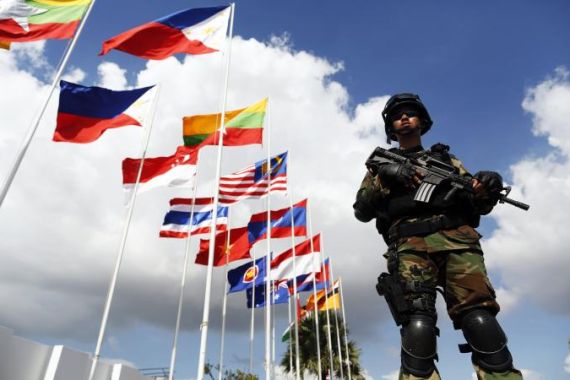The end of the “ASEAN way”
It was the “ASEAN way” to be non-confrontational, put on a united front… and pretty much sweep things under the carpet.

The long-time journalists in this region have joked that it didn’t really matter if they missed out on covering ASEAN summits as nothing ever really happened at them anyway.
The ten-member regional organisation composed of Brunei, Cambodia, Indonesia, Laos, Malaysia, Myanmar, The Philippines, Thailand, Singapore, and Vietnam was seen as a bit of a toothless mouse … ineffective, irrelevant, and a trifle useless.
All pomp and ceremony at the best of times – with very little substance. It’s been termed a “loose grouping” with nothing legally binding it together.
The one pronouncement from ASEAN with any kind of general recall was its members’ agreement of “non-interference” in each other’s affairs – which meant that for the most part, there were no condemnations of, or sanctions against, or even reactions to alleged human rights violations amongst them from anyone in the group.
It was the “ASEAN way” to be non-confrontational, put on a united front… and pretty much sweep things under the carpet. Which is likely why most thought the group a “lame” body.
Everything hinged on members’ consensus… and for many years, the only underlying consensus appeared to be making sure everyone played nice, and kept the house clean and presentable at all times. There was to be no “rocking the boat”, as it were.
But if one thing is clear after this series of recently concluded summits in Phnom Penh (ASEAN + Australia, China, India, Japan, New Zealand, Russia, South Korea, and the US) it’s that ASEAN is changing.
China’s chagrin
Many analysts have said that if the group is to survive and transform itself into a legitimate player in this increasingly strategic region, it has to. A joke going around this time around was that much of the media was only keen on newly-re-elected US President Obama’s presence now that the US is “pivoting” its attention to the Asia-Pacific…much to China’s chagrin.
Obama’s historic trips to Myanmar and Cambodia – the first of any sitting US leader – were expected to be the highlights of coverage… and the only remaining question on people’s minds was whether he would say anything about China’s regional maritime disputes with US allies Vietnam and the Philippines – a sore subject that host-nation and ASEAN Chair Cambodia had not wanted raised at all.
But it’s precisely because Cambodia, a nation with deep ties to China, tried to “stifle” that issue that things didn’t quite go as it had planned.
The Philippines, one of the countries embroiled in an increasingly tense dispute with China over overlapping maritime claims, spoke out in public contradiction of Cambodia’s statement that ASEAN members had “agreed” to not “internationalise” the territorial disputes.
“There was no consensus,” Philippine President Benigno Aquino said after the Cambodian leader finished his declaration. And that was only the beginning.
Possibly emboldened by the presence of Obama, (and the seven other non-ASEAN leaders), Aquino took the opportunity to basically “internationalise” the matter by speaking about the need for a “multi-lateral” resolution.
One that involves all those with a stake in the disputed areas’ maintaining its freedom of navigation and over-flight, including the US. A position several other countries agreed with.
And just like that, the subject that wasn’t supposed to be discussed hijacked the discussions. Much of this happened behind closed doors, but there was no way it was going to remain there… whether ASEAN liked it or not.
Cambodian Prime Minister Hun Sen delivered his usual stage-managed, loquacious statement in an attempt to conclude the summits on a “positive” and “graceful” note… but he refused to answer questions (of which there were many!) ostensibly because he was tired and feeling “emotional” about the passing of Cambodia’s former king last month.
But never mind Hun Sen’s neat summary. The media rush, (referred to by one journalist as similar to a dangerous bar-room brawl), to get to the Chinese and Philippine delegates as they exited and looked to make side-line statements taking pot-shots at each other (without directly pointing fingers of course), said more about the region’s state of affairs than can be tidied up and swept under the carpet.
This time around, ASEAN may have found itself with little other choice than to do something more substantial.